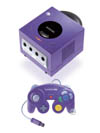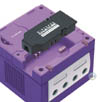
 |
|
Wiretap: Spaceworld 2000 Wrap-upSpaceworld 2000 has come and gone, and the veil has finally been lifted from Nintendo's two next generation products: the Game Boy Advance and the Nintendo GameCube. The first is designed to continue an unprecdented run of success, while the latter must restake the legendary company's claim to console supremeacy. Both did their jobs admirably. The Game Boy Advance has ridiculously little in the way of competition, as the Neo Geo Pocket Color was banished from U.S. shores earlier this summer. In Japan, only Square's recent announcement of Final Fantasy re-releases for the Wonderswan has seen any other portable in the news. When the GIA asked Phil Harrison, Sony Vice President for 3rd party relations and R&D, about Sony's portable gaming plans, he responded with nothing but compliments to the engineering and design work behind rival Nintendo's Game Boy Color. Game Boy has truly cornered portable gaming, with a 95% share in a market that has sold systems at an amazing 1:1 ratio with home consoles over the past year.
Even so, Nintendo seems to have risen to the challenge of topping this historic run, as the Game Boy Advance (GBA) incorporates a quality screen and a powerful processor with the same great battery life that helped the Game Boy stay a fan favorite. Developers and pubishers are tripping over each other to announce new franchise installments, ranging from Castlevania to Tactics Ogre, as well as original titles. As for the playable software available at Nintendo's annual show, the GIA's J.T. Kauffman came away wowed, stating that the GBA was an "absolutely amazing" piece of hardware. Impressive hardware aside, the Game Boy Advance's announcement was more coronation than anything else, so all critical eyes were soon turned towards Nintendo's next console. The initial reaction to the GameCube's aesthetics were mixed, but there can be little doubt that Nintendo succeeded in providing unforgettable gaming images for the year-long wait ahead. Whether it was Samus Aran gloriously sprinting down an underground corridor, Link and Ganon engaging in a dramatic real-time duel, or a squad of X-Wings flying towards the Death Star, the GameCube's demos took the frachises we love and gave a glimpse of what they could look like on Nintendo's new system. The smartest choice on Nintendo's part was a deceptively simple one: using tech demos to show off potential games instead of meaningless demonstrations of power. The first images of the PlayStation 2 were such things as the model from Ridge Racer walking down a runway and a rubber ducky in a sink. These images were mostly irrelevant to anything software related, and left gamers reaching for something more exciting and pertinent. Even the scaled-down version of Final Fantasy VIII's ballroom scene was impressive only because it looked somehwat as good as something we'd seen before, just in real-time.
Contrast those with a stunningly detailed Link throwing his shield down and charging Ganon or Samus turning towards the screen and opening her blaster to fire. These immediately brought home the potential for GameCube titles, and despite some of the demos (such as Metroid) being pre-rendered, a sense of "I want to play this now!" came over most everyone who saw the pre-show demonstration at Makuhari Messe. Kauffman told of a press that was "incredibly excited" by what they saw, and videos from the unveiling included loud and constant cheering from the media. I don't recall any cheering for Sony's ducky or Microsoft's butterflies. As for the system itself, Nintendo clearly has put all their chips on a design solely dedicated to playing videogames. The GameCube is a small system (4 by 6 by 6 inches) with no DVD movie playback, four obvious controller ports on the front, and a large carrying handle in the back. The use of a 1.5 gigabyte, three inch proprietary media format won't even allow for the playing of audio CDs, further cementing a drastic move away from the set-top box philosophy behind the PlayStation 2 and Xbox. For the first time in industry history, the major manufacturers are making fundamentally different products in both design and function. Most of that was expected, however, and followed statements the company had been making for years. Nintendo's real surprise came in the form of the in the physical appearance of the hardware, which was soon described as everthing from an "Fisher Price Easy-Bake oven" to an "art deco toaster." The system seeks to mimc the pop art consumerism of Apple, combining the colorful plastic shells of the iMac with the small-but-powerful aesthetics of the G4 cube. If a PlayStation 2 will blend into your stereo cabinet perfectly, a GameCube will be the small, bright center of attention on your desk.
This kind of outer design matches the system's philosophy well: it is a compact, game-centric piece of hardware. After some initial shock at the decidedly non-Nintendo appearance, the system's looks will probably become as much a non-factor as the looks of all previous systems after they were first announced -- Jaguar CD excepted. There was also some grumbling about Nintendo only showing "old" franchises, but given the record sales and critical acclaim that the last wave of updates saw, this should be a non-issue. If gamers were surprised by the look of the GameCube itself, it was only because they had yet to see the controller. Nintendo took the analog stick design of an N64 controller, shifted the D-pad southward, and added a secondary analog stick (e.g. Dual Shock) and two analog shoulder buttons (e.g. the Dreamcast). All this made for a controller which was roundly criticized at first glance by most, but should prove a logical and functional evolution of current designs. With an analog stick in the primary position and the D-pad relegated to the southeast of it, Nintendo's devotion to analog control remains clear. The layout seems perfectly designed for the next generation of 3D action and adventure games, but the unsymmetrical shape and four face buttons means fighting game fans should start saving for arcade sticks immediately. Once I saw the controller being comfortably used by Nintendo representitives and endorsed by others who had tried it, I began to understand the philosophies Miyamoto expressed as motivation behind its design. While it might look -- in the words of one industry insider -- like "a failed clone from Alien 4," the GameCube controller feels like a well-planned melding of the most useful parts from today's current controllers.
Even more unconventional was the announcement that Nintendo was producing first-party wireless controllers for the system, promising a usable range of over 30 feet (10 m). While third parties have often produced unreliable wireless controllers, Nintendo's "Wavebird" project is the first time a console maker has pushed first-party wireless technology. It will be interesting to see how big a selling point this becomes for the GameCube and whether it reaches beyond the mere novelty of past wireless products. Nintendo has remained mostly quiet on the all-important Internet issue, but what has been revealed shows Nintendo is once again going in an entirely different direction than its competitors. Sega has been pushing online gaming and browsing as a major part of the Dreamcast experience since day one, despite the fact that SegaNet, their online gaming network, should be launching September 2000 -- about a year after "day one." Until the gaming infrastructure is in place, Sega has turned to standard web browsing as the focus of Dreamcast's online plans. Sony and Microsoft are positioning their consoles as all-in-one set-top boxes; machines that will be, in the words of Sony, "the center of creativity in your home." Games are but a small part of their online plans. Sony has placed all of its eggs in the broadband basket, refusing to introduce an option for narrowband connectivity, the way a majority of American households currently connect to the Internet.
Meanwhile, Nintendo continues their laser-like focus on gameplay. Like everything else about the GameCube, the Internet connectivity will be "optimized for games." A 56k modem from hardware maker Conexant will be available at GameCube launch, but not bundled with the system. Conexant will make a broadband option available further down the line. It is perhaps telling that neither Nintendo nor Conexant's press materials mentioned the Internet, web browsing, e-mail, or real-time chat. Instead they talked about "giving users more powerful game experiences through network connectivity." As of yet, no specific timetable or structure has been announced. A wild card in the next generation race is the connectivity between the GameCube and Game Boy Advance. The GBA has a special communications cable designed specifically for interfacing with the GameCube, and gamers can easily exchange data between GBA games and GameCube games. Some games may support the GameCube as a controller with built-in hi-res color screen, despite the lack of extra action buttons or analog control. A look at the GBA logo and the GameCube logo reveals that they are designed in the same font, and while such a feature may seem coincidental, it is no surpise that Nintendo has planned this synergy to the smallest detail. Never before have two systems been designed to work so closely together, and Nintendo's U.S. press conference stressed the combined power of the two systems, carefully keeping one from stealing the spotlight from the other. Just as the Transfer Pak and Pokémon Stadium helped power the Nintendo 64 to a strong quarter of sales, Nintendo also hopes that the assured dominance of the GBA brings new creative elements and new customers to the GameCube. Overall, GameCube's unveiling at Spaceworld represented a continuation of Nintendo's old philosophies through new technology. As others turn their focus towards online gaming or the fabled "set-top box", Nintendo firmly remains the company that gameplay built. The appearance of the controller and system were immediately subjected to the de rigeur complaints and second-guessing that defines the Internet. With time, however, each should become a strength through the system's aggressively games-first mantra. The demos were a stroke of brilliance on Nintendo's part, giving gamers exactly what they wanted: a look at how some of the most venerable characters in gaming would appear on the upcoming system. These are hopeful times for Nintendo, and their philosophy of "emphasizing gameplay" is an angle which builds on both their creative strengths and plays to a faithful fanbase. I said two months ago that Nintendo has a clear chance to exploit Sony's weaknesses and retake much of what they lost in the last console cycle. Spaceworld 2000 proved a confident and important first step in doing just that. By Ed McGlothlin, with J.T. Kauffman reporting from Japan. |
|
|||||||||||||||||||||||||||||||




